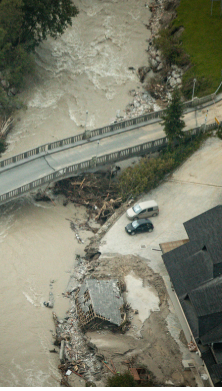
There has been a 50%+ increase in exposure since the turn of the century, driven by increasing fleet values and an increase in passenger numbers. Exposures have risen from $576bn in 2000 to $896bn in 2013 – if exposure growth continues at the same rate, it will top $1trn by 2020.
“Rate reductions over the past decade reflect improvements in the underlying exposure. However, reductions in the airline and aviation market in the past two years have not been driven by risk management improvements, but by overcapacity in the insurance market,” according to Josef Schweighart, Head of Aviation, Germany, AGCS.
Rising costs
While improved safety has resulted in fewer catastrophic claims for insurers, the costs of everyday claims has been rising. Aviation claims are generally becoming more complex to handle and more expensive, reflecting higher values, increasing repair costs, rising compensation payouts and more stringent litigation.
“Exposures in aviation are changing. Safety is improving, which reduces frequency of loss, but severity has been increasing. Today we are seeing a significant change in the underlying risk,” says Henning Haagen, Global Head of Aviation, AGCS.
New vulnerabilities
Technology that helps drive improvements in safety and reduce catastrophic losses also brings new vulnerabilities and potentially higher costs for insurance claims. Aircraft are now far more complex, using new materials and components – there are on average 600,000 parts on a typical jet airliner.
New materials, such as the composite materials used in the wings and airframes of the latest generation of aircraft, are more time-consuming and expensive to repair, requiring expert technicians.
For example, AGCS Head of Aviation – US, Jon Downey recalls two separate claims for Cessna jet aircraft damaged in a hailstorm. In the absence of a repair protocol for their composite-built wings, the aircraft were a total loss at $7m to $8m. In the past, aluminum would have been repairable at a much lower cost, he says.
“New materials can lead to new losses, but it is the speed of innovation and the need to keep pace with understanding the risks that is the major challenge today compared with the past,” adds Haagen.
Higher limits
Claims costs are also affected by values, which have been steadily increasing across the board, from the largest airliner to corporate jets. An Airbus A380 was the first aircraft to require an insured limit in excess of $2bn while the hull of a Dassault Falcon 7X business jet is now typically insured for around $60m to $70m.
The trend towards a more litigious society in parts of the world, and growing compensation payouts is another area driving up the costs of claims. With improved accident investigation, it is now easier to determine liability and potentially sue a number of parties involved in a loss – including the airline, manufacturer and the general aviation firms that provide components and services.
Product evolution
Insurers will need to consider how to respond to changes in the underlying exposures and improvements in risk management and safety in the aviation sector, according to Haagen.
Advancements in technology and risk management mean that potential issues with a component, engine or airframe are picked up before they become catastrophic losses. As a result, airlines and manufacturers may have to ground an entire fleet, with resulting product recall and business interruption losses.
For insurers, which have historically limited their involvement in product recall, this may mean adapting their product offering.
“Insurers need to adapt to aviation industry developments. For example, technology and safety-driven developments will require underwriters to understand clients better to make sure we keep pace and are relevant,” says Haagen.















